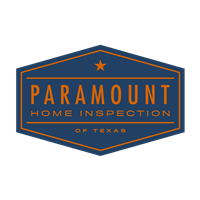Thermal Imaging Facts
A lot of inspectors out there are offering thermal imaging as part of their services. But are you really receiving all the benefits you're led to believe when hiring a home inspector that uses the technology? Are you really getting your money's worth?
DID YOU KNOW?
- Thermographic imaging is a science; in fact experienced and certified thermographers will tell you it is not always an exact science although they do their best. Why? Because the conditions during a thermographic inspection need to be as precise and consistent as possible; and if they aren’t, the inspection will be postponed until such time the ideal conditions exist.
- Atmospheric & ambient conditions. There must be an approximate 20 degree F differential between the indoor and outdoor temperature for a period of several hours in order to conduct an accurate test. The exterior surfaces must be free of moisture (dew in most cases). Wind speeds should be less than 8 mph. Let’s be honest; there are many days in Central Texas during the fall, winter and spring when these conditions simply will not exist on any given day for a scheduled inspection. And that includes summertime morning periods and winter afternoon times. If the inspector is looking for insulation anomalies, they typically will not be detectable without a significant temperature differential (that occur in the late afternoon in summer and early morning during the winter); at least for the camera most home inspection companies are using.
- Electrical issues. Electrical circuits that may have problems should be under load and for a good long period of time that a typical home inspection simply can't allow time for. (That means every outlet and all appliances.) I've seen a picture on a competitor's website of a service panel calling out an 'over-heated' breaker. All of the breakers showed red while one was deeper red than all the others. But there weren't any reference temps shown. So how did he know it was actually over heated? Was it too hot to the touch? Were there indications of overheating from melted or burned components? (By the way; it was a 220 v. circuit which are typically warmer under load like water heaters or clothes dryers.) FACT: Did you know that Arc Fault Circuit Interrupters (AFCI's) are typically warmer than conventional breakers? That's because there is current constantly running through them to detect arcs and shorts. During cold months the temperature differential between one of these and a conventional breaker could be 50 degrees F or more.
- Moisture detection by a thermal imaging camera is subject to the same atmospheric and ambient differentials delineated above, but in a unique way. The heat exchange of moisture that has saturated a component is much slower than the adjacent surfaces. So there will be times when the temperature of the moisture is the same or almost the same as all the surrounding surfaces.
- Other considerations. A complete thermographic inspection should include the exterior and interior so that a comparison can be done and conclusions drawn. A blower fan should be used to increase the interior ambient pressure gradient to exaggerate leaks in the thermal envelope for accurate detection with the camera. If the home is occupied, furniture, furnishings, wall hangings, etc. should be removed from walls or set away from walls for a period of 12 hours. Ask the inspector the name, make and model they are using. You can make a quick internet search to find out what they paid for it. If it’s < $5000, it’s not up to the standard certified professional thermographers use in the industry.
I’m all for getting a leg up on the competition and making a buck. It’s good for business and the consumer will always benefit from that. However, home inspectors who tout thermal imaging as part of the inspection may be using it as a marketing gimmick or even a crutch for lack of experience. A thermal imaging camera can be another tool in the tool bag that may on occasion detect an issue during a home inspection, but all it's going to reveal is a temperature differential; and that could be anything without a verification. An experienced and competent home inspector can and will detect what a camera would see if he is experienced & doing his job. Is the inspector that's using the equipment certified? When was the last time the camera was calibrated? I'd also ask for in writing that the thermal scans offer a significantly better inspection than one without the thermal imaging camera. Ask for a 100% guarantee; chances are you won't get one.
Buyer should beware of what you may be led to believe. The average quality home inspection duration without specialized equipment is two to three hours. If the inspector is spending time with the thermal imaging camera during those two or three hours, he may be giving less attention to some of the home’s other systems that need it.
The decision to hire a home inspector should never be based on a thermal imaging camera alone.
For more information please visit:
http://www.greenbuildingadvisor.com/blogs/dept/musings/introduction-thermal-imaging
https://energy.gov/energysaver/thermographic-inspections
For one of the best comprehensive, independent and no nonsense inspections around Central Texas, contact Joe today!
